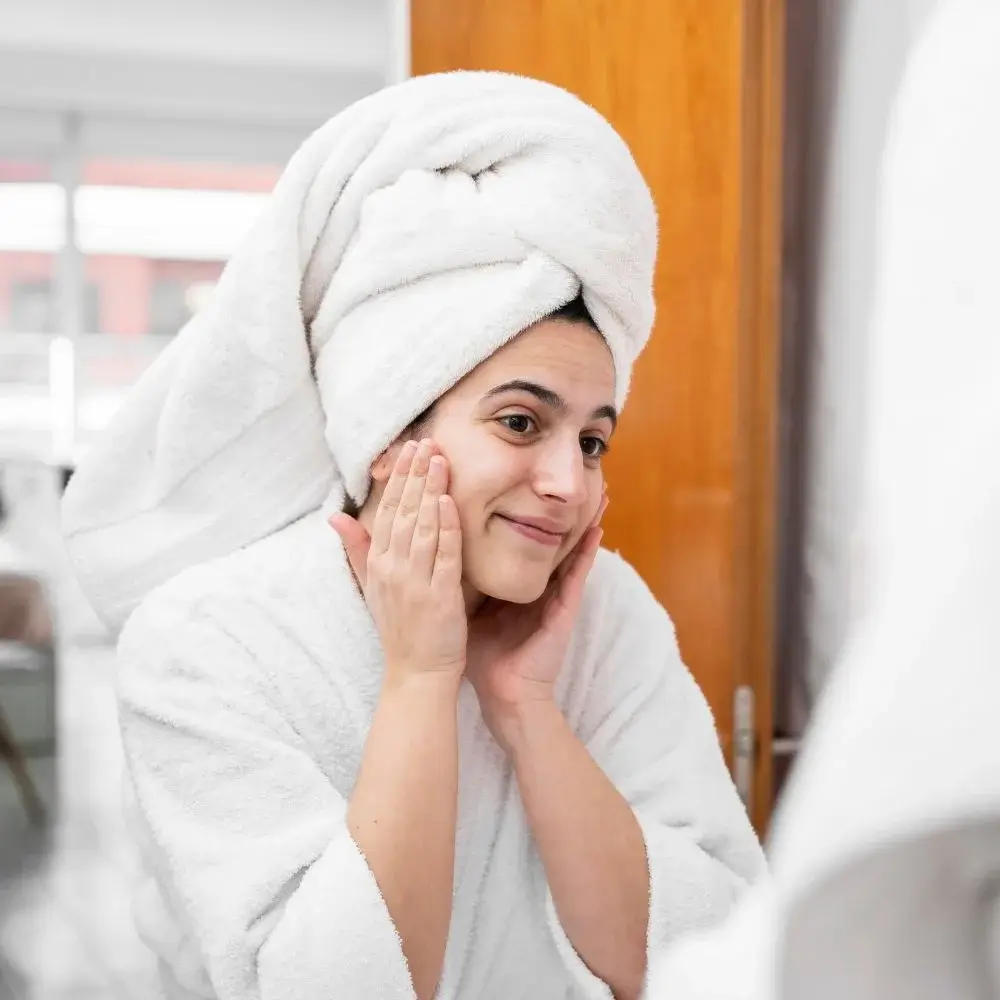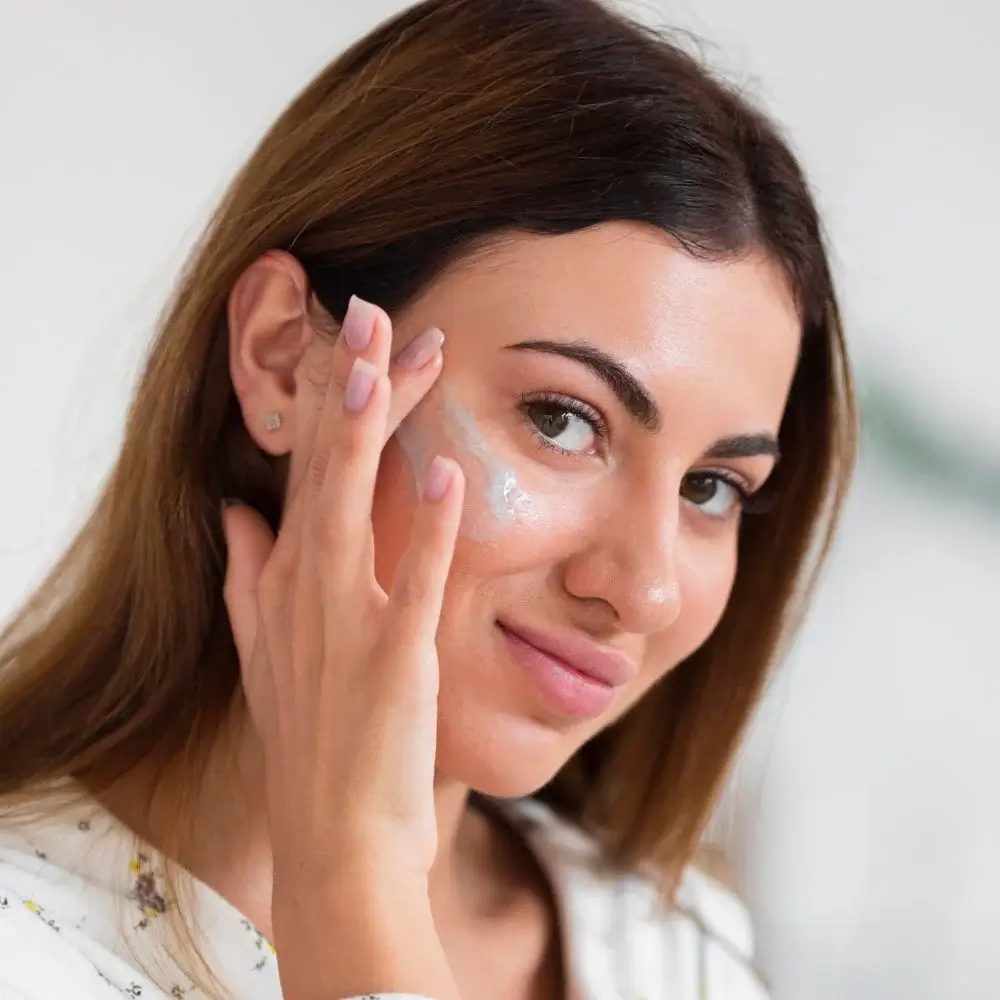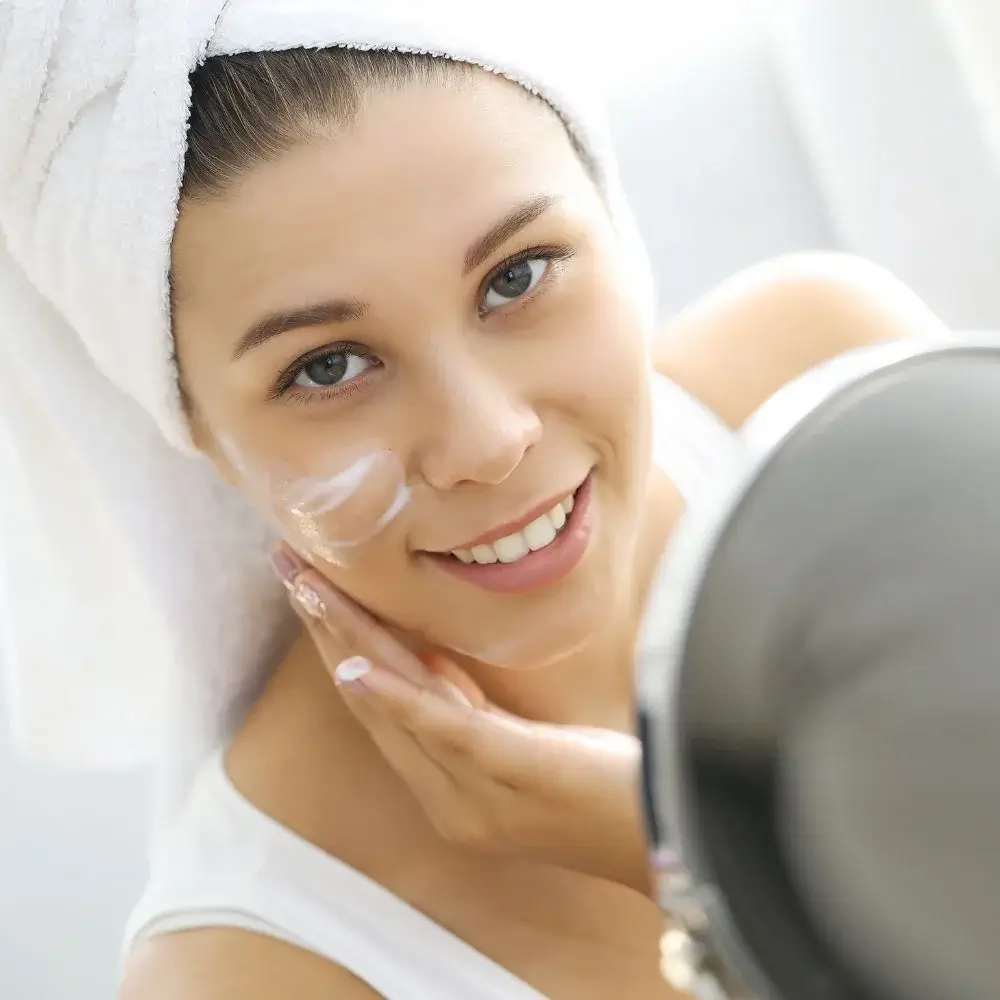We all know the sun’s UV rays can harm our skin, but did you know that blue light can be just as damaging? Blue light is a type of light that comes from electronic screens like our phones and computers. It can cause premature aging and other skin damage, so blue light sunscreen has become increasingly popular in recent years. But how does it work? In this blog post, we’ll take a closer look at what blue light is and how blue light sunscreen can help protect your skin.
What is blue light?
Blue light is a part of the visible light spectrum with a shorter wavelength and higher energy than other light colors. As mentioned before, it comes from electronic screens like our phones, laptops, and flat-screen TVs. While blue light isn’t all bad (it helps regulate our sleep/wake cycles, for example), prolonged exposure to it can cause damage to our skin. This is because blue light can penetrate deeper into the skin than other types of light, causing damage to collagen and elastin and resulting in fine lines, wrinkles, and sagging.
How does blue light sunscreen work?
Blue light sunscreen works by using antioxidants and other ingredients to neutralize the free radicals that are generated by blue light exposure. Free radicals are unstable molecules that can react with other molecules in the skin, causing damage and accelerating aging. By neutralizing these free radicals, blue light sunscreen helps protect the skin from premature aging and other damage caused by blue light exposure.
What are some key ingredients to look for in blue light sunscreen?
When shopping for blue light sunscreen, look for ingredients like niacinamide, vitamin C, and vitamin E. These antioxidants help neutralize free radicals and protect the skin from damage. Zinc oxide and titanium dioxide are also commonly found in blue light sunscreen, providing physical protection against UV rays and blue light. Besides, some blue light sunscreens contain tinted pigments that can help even out skin tone and reduce the appearance of redness.
Do I need to use blue light sunscreen every day?
Yes! Even if you’re mostly indoors and away from electronic screens, blue light can still penetrate through windows and overhead lights. And if you work at a computer or use your phone frequently, using blue light sunscreen daily is a must. Remember, prevention is always better than trying to fix damage that’s already been done.
While we may not be able to avoid blue light or electronic screens, we can take steps to protect our skin from its damaging effects. Blue light sunscreen is a simple and effective way to do just that. Choosing a sunscreen with key ingredients like antioxidants and physical UV blockers can help prevent premature aging and keep your skin healthy and radiant. So, next time you’re shopping for sunscreen, don’t forget to consider blue light protection!
Welcome to our exclusive Blue light sunscreen collection! We know how important it is to protect your skin against the harsh blue light emitted by screens, and that's why we've handpicked the best sunscreens to shield you from it. Our collection includes various options, from lightweight moisturizers to heavy-duty creams, ensuring you'll find your perfect match. Whether you're working from home or spending long hours scrolling through your phone, our sunscreens have got your back. Say goodbye to pale, dull skin and hello to a healthy, glowing complexion. Don't wait any longer; click the link and discover your next favorite Blue light sunscreen today!
What is the ideal frequency for reapplying blue light sunscreen?
When exposed to screens or artificial light sources, the ideal frequency for reapplying blue light sunscreen is every two hours. This recommendation aligns with the sunscreen application guidelines established for UV protection. Blue light sunscreen is a preventative measure to combat the potential adverse effects of prolonged digital device usage. By reapplying every two hours, you ensure your skin maintains a consistent shield against the blue light emitted by screens and artificial lighting. This practice is particularly crucial for individuals who spend extended periods in front of digital devices to sustain continuous defense.

What role does clothing play in protecting against blue light?
Clothing, while not the primary line of defense against blue light, can contribute to protection to some extent. The level of protection offered by clothing depends on various factors, including the color and weave of the fabric. Dark-colored and tightly woven fabrics generally offer better defense against blue light than lighter or sheer materials. However, it's important to emphasize that more than clothing is needed to provide comprehensive protection, especially for areas of skin not covered by clothing. Combining protective clothing with a dedicated blue light sunscreen designed for the skin is advisable to achieve optimal protection.

What other skincare products can complement the use of blue light sunscreen?
In addition to blue light sunscreen, incorporating complementary skincare products can enhance your skin's defense against the potential effects of blue light exposure. Serums and moisturizers enriched with antioxidants, such as vitamins C and E, can be valuable additions to your skincare routine. These antioxidants work to neutralize free radicals generated by blue light, offering another layer of protection for your skin. Using such products alongside blue light sunscreen creates a comprehensive skincare regimen that shields your skin and promotes overall health and well-being.

How does blue light sunscreen compare to other forms of blue light protection?
Blue light sunscreen stands out as a targeted solution for protecting the skin from the harmful effects of blue light. While screen filters and blue light glasses effectively safeguard the eyes from blue light exposure, they do not provide direct protection to the skin. Therefore, blue light sunscreen and these protective eyewear options are not interchangeable but rather complementary. Using sunscreen and eye protection ensures comprehensive defense, addressing the potential effects of blue light on your skin and eyes. This multi-pronged approach maximizes your overall protection against blue light exposure.b

How can I ensure even coverage when applying blue light sunscreen?
Achieving even coverage when applying blue light sunscreen ensures its effectiveness. To do so, apply sunscreen generously to all exposed areas of your face and neck. Pay special attention to those areas most susceptible to blue light exposure, such as the cheeks, forehead, and neck. To promote even distribution, gently massage the sunscreen into your skin using a circular motion. This massaging action helps the product absorb evenly, ensuring consistent and reliable protection across all treated areas. By taking these steps, you can maximize the benefits of your blue light sunscreen.
Should I use a separate sunscreen for UV and blue light protection?
It is advisable to use a dedicated blue light sunscreen in addition to your regular UV protection. Blue light sunscreen is formulated specifically to address the unique challenges of blue light exposure. While UV protection is essential for guarding against the sun's harmful rays, blue light sunscreen complements this by addressing the potential effects of blue light from digital devices and artificial lighting. By employing both types of sunscreen, you create a comprehensive defense strategy that safeguards your skin from the entire spectrum of potential damage, encompassing UV rays and blue light. This dual approach offers robust protection for the health and well-being of your skin.







